
Environmental Sciences Europe
Scope & Guideline
Empowering researchers for a cleaner, greener Europe.
Introduction
Aims and Scopes
- Ecotoxicology and Risk Assessment:
The journal publishes studies that assess the ecological risks posed by pollutants, including heavy metals, pesticides, and pharmaceuticals, emphasizing their effects on aquatic and terrestrial organisms. - Climate Change and Environmental Policy:
Research related to the impact of climate change on ecosystems and the effectiveness of environmental policies aimed at mitigating these effects is a significant focus area. - Water Quality and Management:
The journal covers various aspects of water quality assessment, including the monitoring of contaminants, the impact of agricultural practices, and innovative treatment methods. - Biodiversity and Ecosystem Services:
Studies exploring the relationship between biodiversity and ecosystem services, including the effects of land use changes and pollution on species and habitats, are regularly featured. - Emerging Contaminants and Microplastics:
Research on the occurrence and effects of emerging contaminants, including microplastics, and their implications for environmental health and safety is a growing area of interest. - Sustainable Resource Management and Circular Economy:
The journal emphasizes research that promotes sustainable practices in resource management, including waste reduction, recycling, and the adoption of circular economy principles.
Trending and Emerging
- Climate Resilience and Adaptation Strategies:
Research focusing on developing strategies to build resilience against climate change impacts, including adaptation practices in agriculture and urban planning, has gained significant traction. - Innovative Remediation Technologies:
Emerging studies on innovative technologies for pollution remediation, including bioremediation and advanced materials for contaminant removal, are increasingly featured. - Transdisciplinary Approaches to Environmental Challenges:
There is a growing trend towards transdisciplinary research that integrates knowledge across disciplines to address complex environmental issues, reflecting a holistic view of sustainability. - Health Impacts of Environmental Pollution:
Research examining the direct links between environmental pollution and public health outcomes, particularly in the context of air quality and chemical exposure, is emerging as a critical area of focus. - Sustainable Agriculture Practices:
The journal is increasingly publishing studies on sustainable agricultural practices that minimize environmental impacts while ensuring food security, reflecting the importance of agriculture in environmental science. - Impact of Extreme Weather Events:
Research analyzing the consequences of extreme weather events, such as floods and droughts, on ecosystems and human communities is becoming more prominent, particularly in the context of climate change.
Declining or Waning
- Traditional Chemical Pollution Studies:
Although still relevant, studies focused solely on traditional pollutants without considering their interactions with newer contaminants or emerging issues have seen a decline in frequency. - Single-Species Toxicity Testing:
There is a noticeable shift away from single-species toxicity assessments towards more complex, ecosystem-level studies that examine interactions among multiple species and stressors. - General Environmental Monitoring:
Research that merely monitors environmental parameters without a specific focus on their implications for health or policy is less common, as studies increasingly aim for applied outcomes. - Historical Environmental Studies:
While historical studies provide valuable insights, there has been a decline in publications focused on past environmental conditions without direct relevance to current challenges. - Local Case Studies:
Research that is limited to local case studies without broader implications or connections to global environmental issues appears to be decreasing in favor of more comprehensive, comparative studies.
Similar Journals
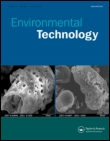
ENVIRONMENTAL TECHNOLOGY
Shaping Tomorrow’s Environmental Practices TodayENVIRONMENTAL TECHNOLOGY, published by Taylor & Francis Ltd, is a prominent journal that serves as a crucial platform for disseminating pioneering research in the multifaceted fields of Environmental Science, Water Science and Technology, and Waste Management. With an impressive record spanning over three decades from 1990 to 2024, the journal holds significant rankings in various categories, including Q3 in Environmental Chemistry and Q2 in both Medicine (miscellaneous) and Water Science and Technology for 2023. Its Scopus rankings further position it within the top tiers of Environmental Science disciplines, reflecting its influence and relevance, particularly as it pertains to pressing global environmental challenges. While the journal does not offer an open access option, it remains dedicated to advancing knowledge and promoting innovative solutions among researchers, professionals, and students engaged in environmental studies. As it continues to attract high-quality submissions, ENVIRONMENTAL TECHNOLOGY plays a vital role in shaping future research and practices aimed at sustainable environmental management.

Environmental Engineering Research
Championing research that protects our planet.Environmental Engineering Research, published by the Korean Society of Environmental Engineers (KSEE), stands as a pivotal journal in the field of environmental engineering. With an ISSN of 1226-1025 and an E-ISSN of 2005-968X, this esteemed journal has shown remarkable growth since its inception, converging years from 2011 to 2024. The journal is recognized in the Scopus ranking system, holding a position of #46 out of 197 in the Environmental Science category, marking it in the 76th percentile—a testament to its impact and significance in the field. Furthermore, it enjoys a commendable Q2 ranking in Environmental Engineering for 2023. While the journal operates under a traditional access model, its commitment to disseminating vital research and innovative solutions for environmental challenges enhances its appeal to researchers, professionals, and students alike. The Environmental Engineering Research journal invites contributions that advance the understanding and application of engineering principles to environmental issues, providing a forum for scholars dedicated to fostering sustainability and environmental protection.
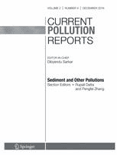
Current Pollution Reports
Fostering Collaboration for a Sustainable PlanetCurrent Pollution Reports, published by Springer Heidelberg, is an esteemed journal in the field of environmental science, focusing on the multifaceted aspects of pollution, waste management, and water science. With an impressive 2023 impact factor reflected in its status as a Q1 journal across multiple categories—including Management, Monitoring, Policy and Law, Pollution, Waste Management and Disposal, and Water Science and Technology—this journal stands at the forefront of environmental research and policy discourse. The journal, which has been in publication since 2015, aims to provide a platform for scholars and practitioners to share their findings, promoting the exchange of innovative ideas and effective solutions to pressing environmental challenges. With its rigorous peer-review process, Current Pollution Reports serves as an invaluable resource for researchers, professionals, and students committed to understanding and addressing pollution and its impacts on our planet.
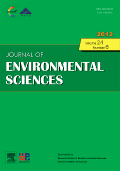
Journal of Environmental Sciences
Connecting Scholars to Transform Environmental PracticesJournal of Environmental Sciences, published by SCIENCE PRESS, is a premier scholarly journal dedicated to advancing knowledge in the multidisciplinary fields of environmental science, environmental chemistry, and environmental engineering. Established in 1970 and based in Beijing, China, this journal has consistently garnered recognition for its high-quality research, demonstrated by its Q1 rankings across multiple categories, including Environmental Chemistry, Environmental Engineering, and General Environmental Science. With an impressive Scopus rank of #11 for Environmental Science, the journal has firmly positioned itself within the top tier of its field, attracting contributions from leading researchers and academics worldwide. Although it operates under subscription access, the journal's commitment to disseminating critical insights into pressing environmental issues makes it an invaluable resource for professionals, researchers, and students striving to make impactful contributions to the understanding and management of environmental challenges.

ENVIRONMENTAL MANAGEMENT
Exploring interdisciplinary approaches to environmental management.ENVIRONMENTAL MANAGEMENT, published by Springer, stands at the forefront of advancing sustainability and ecological stewardship in the fields of Ecology, Global and Planetary Change, and Pollution. With an impressive tracking history from 1977 to 2024 and prestigious quartile rankings reflecting its significant impact (Q1 in Ecology and Q2 in both Global and Planetary Change and Pollution), this journal engages a wide range of stakeholders, including researchers, policymakers, and environmental professionals. The journal is a vital resource for those dedicated to addressing pressing global environmental challenges, publishing rigorous interdisciplinary research that informs policy and practice. While it does not offer open access, its content remains accessible through institutional subscriptions. Located in the heart of New York, ENVIRONMENTAL MANAGEMENT is dedicated to fostering a substantive dialogue on innovative approaches to environmental preservation and management.
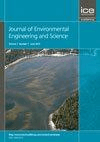
Journal of Environmental Engineering and Science
Advancing Research at the Intersection of Engineering and EcologyJournal of Environmental Engineering and Science, published by Emerald Group Publishing Ltd, is a prominent academic platform dedicated to the dissemination of cutting-edge research in the fields of environmental engineering, chemistry, and science. This journal, with ISSN 1496-2551 and E-ISSN 1496-256X, features a comprehensive collection of studies that delve into innovative methodologies and practical applications aimed at solving pressing environmental issues. Having been published since 2002, it spans critical research years from 2015 to 2024, offering insights that are invaluable to both academics and practitioners alike. With its current rankings placing it in the fourth quartile for Environmental Chemistry and Engineering, and the third quartile in miscellaneous Environmental Science, the journal serves as a significant yet under-utilized resource for emerging scholars seeking to contribute to the ecological discourse. Though it does not offer Open Access, the content is meticulously curated to uphold academic rigor, catering especially to researchers, professionals, and students keen on advancing their understanding of environmental challenges and engineering solutions.

WATER AIR AND SOIL POLLUTION
Advancing environmental knowledge for a sustainable future.Water Air and Soil Pollution is a leading peer-reviewed journal published by Springer International Publishing AG, focusing on the vital fields of environmental sciences, ecological modeling, and pollution management. Since its inception in 1971, the journal has contributed significantly to advancing knowledge in the interdisciplinary realms of Water Science and Technology, Environmental Chemistry, and Environmental Engineering. With an impressive history, the journal currently holds a Q2 quartile ranking in several categories, reflecting its high impact and relevance in these essential areas of research. Its rankings—such as #95 in Environmental Science: Water Science and Technology—illustrate its standing in the academic community. Researchers and practitioners alike can access a wealth of studies and reviews that aim to address pressing environmental concerns and foster sustainable practices, although the journal is not Open Access. Located in Switzerland, Water Air and Soil Pollution continues to be a critical resource for those dedicated to understanding and mitigating pollution, making it an indispensable tool for anyone engaged in ecological and environmental research.
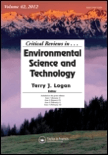
CRITICAL REVIEWS IN ENVIRONMENTAL SCIENCE AND TECHNOLOGY
Driving Excellence in Environmental Research and TechnologyWelcome to CRITICAL REVIEWS IN ENVIRONMENTAL SCIENCE AND TECHNOLOGY, an esteemed journal published by Taylor & Francis Inc. This journal has been at the forefront of environmental research since its inception in 1993, spanning a wide range of disciplines including environmental engineering, pollution control, waste management, and water science. CRITICAL REVIEWS holds an impressive Q1 ranking in multiple categories, including Environmental Engineering and Pollution, demonstrating its critical role in advancing knowledge within the field. With a remarkable Scopus ranking—placing it in the top 1% for Environmental Science categories—this journal serves as an invaluable resource for researchers, professionals, and students alike, providing comprehensive reviews and analyses that catalyze innovative solutions to pressing environmental challenges. Though currently not open access, the journal's content is accessible through various academic platforms, ensuring that cutting-edge research is available to a global audience. Join the community of scholars dedicated to enhancing our understanding of environmental science and technology through rigorous investigation and critical discourse.
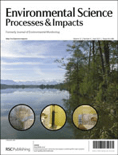
Environmental Science-Processes & Impacts
Empowering voices in environmental science and policy.Environmental Science-Processes & Impacts is a premier journal published by the Royal Society of Chemistry, focusing on critical research in the field of environmental science. With ISSN 2050-7887 and E-ISSN 2050-7895, this journal has established itself as an authoritative source of knowledge since its inception in 2012, maintaining a remarkable Q1 quartile ranking across significant categories such as Environmental Chemistry, Management, Monitoring, Policy and Law, Medicine, and Public Health for the year 2023. It stands as an essential resource for professionals, researchers, and students, aimed at advancing scientific understanding and solutions to pressing environmental issues. With impressive ranks in Scopus, including #45 in Public Health and #27 in Environmental Chemistry, the journal provides a platform for impactful research and interdisciplinary collaboration, emphasizing open access to foster the dissemination of knowledge globally. Join a community committed to exploring the interconnectedness of environmental processes and their implications for society by contributing to or learning from cutting-edge studies published in this esteemed journal.

Rocznik Ochrona Srodowiska
Exploring Innovative Solutions for Environmental ChallengesRocznik Ochrona Srodowiska, published by the Middle Pomeranian Scientific Society for Environmental Protection, is an esteemed journal dedicated to advancing the field of environmental science in Poland and beyond. With an ISSN of 1506-218X, this peer-reviewed journal has established itself as a vital resource since its inception in 2007, addressing various environmental issues and promoting sustainable practices. Currently holding a Q3 category ranking in the Environmental Science (miscellaneous) field for 2023, it places itself in the 23rd percentile of Scopus rankings, reflecting a growing influence in the broader environmental research community. While the journal is not open access, it serves as an important conduit for researchers, professionals, and students to disseminate their findings and contribute to the interdisciplinary dialogue aimed at tackling pressing environmental challenges. With a commitment to rigorous research and practical applications, Rocznik Ochrona Srodowiska remains an essential platform for fostering innovation and collaboration in environmental studies.